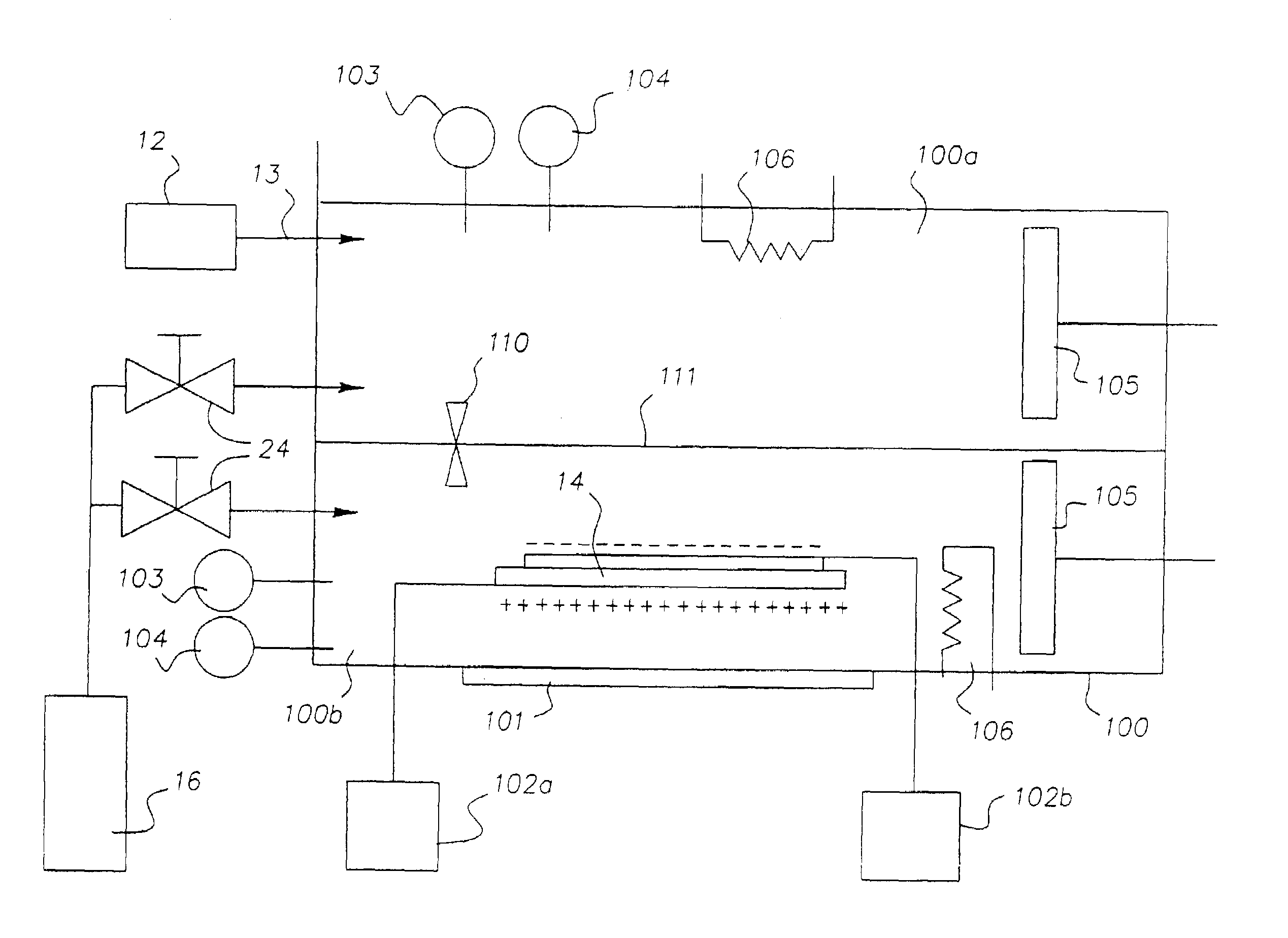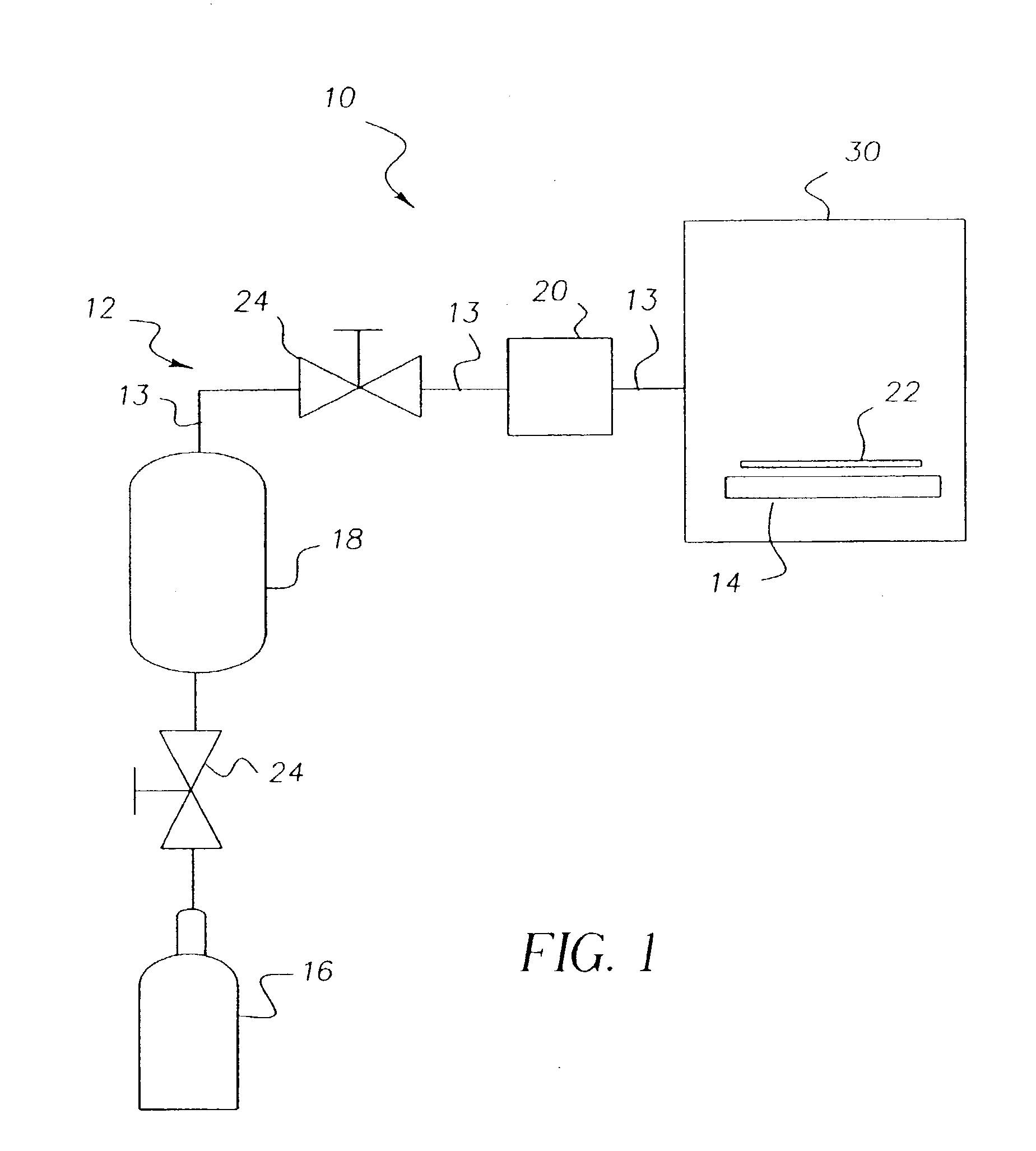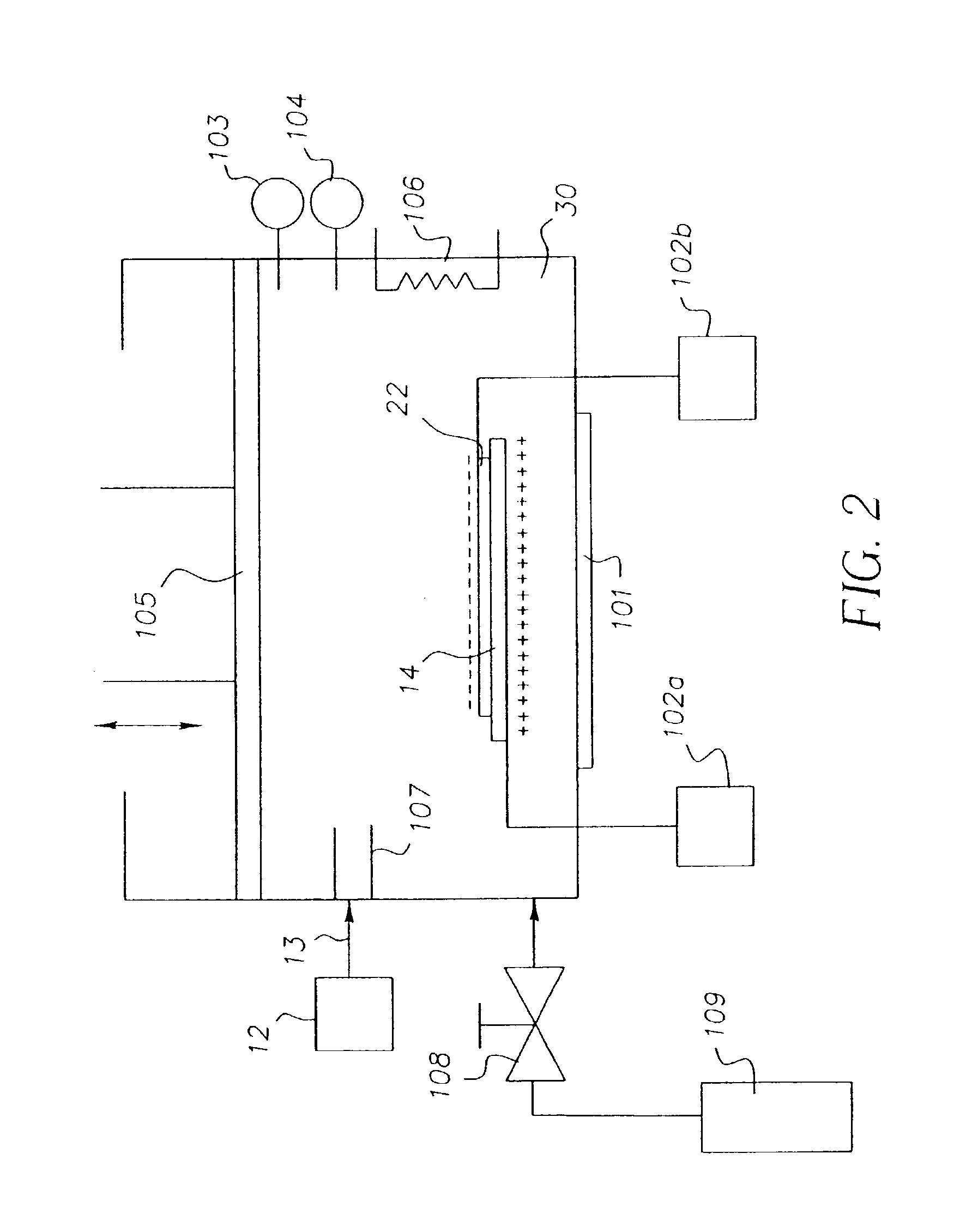Method of manufacturing a color filter
- Summary
- Abstract
- Description
- Claims
- Application Information
AI Technical Summary
Problems solved by technology
Method used
Image
Examples
embodiment i
[0056]Referring to FIG. 2, controlled environment 30 is designed for use at extremes of pressure. Incorporated in the controlled environment 30 is a pressure modulator 105. The pressure modulator 105, as shown, resembles a piston. This is for illustration only. Skilled artisans will also appreciate that pressure modulator 105 could also be a pump or a vent used in conjunction with an additional pressure source. An example of an additional pressure source is the source 109 of compressed fluid. This source 109 is modulated with a flow control device or valve 108 to enable color filter material to enter the deposition chamber 30 via a fluid delivery path 13. The pressure inside the deposition chamber 30 is carefully monitored by a pressure sensor 103 and can be set at any pressure less than that of the delivery system 12 (including levels of vacuum) to facilitate precipitation / aggregation. In addition, the deposition chamber 30 is provided with temperature sensor 104 and temperature mo...
embodiment ii
[0061]Turning now to FIG. 5, another embodiment of deposition chamber 100, contemplated by the invention, is shown. It contains many of the same features previously described in the discussion of FIG. 2, with the addition of a medium 111 which divides the deposition chamber 100 into a preparation sub-chamber 100a and a deposition sub-chamber 100b. The materials in these sub-chambers 100a, 100b are allowed to flow through controllable dual chamber interface valve 110. Each sub-chamber 100a, 100b is configured with independent control of pressure and temperature through the use of pressure sensors 103, temperature sensors 104, pressure modulators 105, and temperature modulators 106. The preparation sub-chamber 100a differs from the formulation reservoir 18 (FIG. 1) in that the color filter material 40 can be (but is not necessarily) precipitated. The addition of a preparation sub-chamber 100a to the system allows for a potentially large volume of prepared deposition material to be rea...
embodiment iii
[0062]In FIG. 6, a simplified deposition chamber 200 is illustrated. In this embodiment, no provision is made for maintaining a pressure above that of ambient. Many of the other features described in FIGS. 2 and 5 are still possible, but by no longer requiring the deposition chamber 200 to support an elevated pressure, certain additional advantages can be realized. For example, the substrate 14 no longer is required to be contained in deposition chamber 200. This is illustrated in FIG. 6 by showing a moving substrate in the form of a web 120 that is transported by conveyors 121. In such a system, it is possible to perform continuous coating operations. In this case, a separate mask would likely not be used except for the case of a step and repeat process. Rather, a mask integral to the substrate, as previously described, is the preferred method of achieving patterned deposition. Alternatively, a similar approach, illustrated in FIGS. 2 and 5, could be used also without need for acce...
PUM
 Login to View More
Login to View More Abstract
Description
Claims
Application Information
 Login to View More
Login to View More - R&D
- Intellectual Property
- Life Sciences
- Materials
- Tech Scout
- Unparalleled Data Quality
- Higher Quality Content
- 60% Fewer Hallucinations
Browse by: Latest US Patents, China's latest patents, Technical Efficacy Thesaurus, Application Domain, Technology Topic, Popular Technical Reports.
© 2025 PatSnap. All rights reserved.Legal|Privacy policy|Modern Slavery Act Transparency Statement|Sitemap|About US| Contact US: help@patsnap.com



